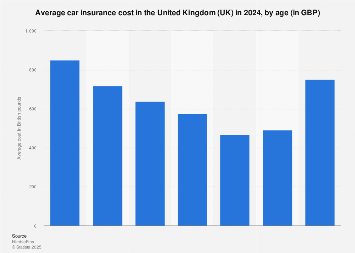Preventive care is covered If you look for care when you're sick or hurt, you'll typically need to pay something expense till you reach your annual deductible. Some services may be covered at no charge to you, including annual checkups, age-appropriate screenings, other types of preventive care, and preventive medications as mandated by the Affordable Care Act.
Know the expense of care Medical insurance is less confusing when you comprehend the various costs that belong to your health insurance. Informing yourself about how medical insurance works is an important part of being a clever health care customer.

Sales Concerns and Additional Plan Info: Calls may or may not be responded to inside the United States. Monday Friday: 8 a. m. 8 p. m. CTSaturday: 8 a. m. 6 p. m. CTSunday: 10 a. m. 2 p. m. CT Client service: Calls may or might not be answered inside the United States.
m. 8 p. m. CTSaturday: 8 a. m. 5 p. m. CTSunday: Closed kelly oakes cpa Currently a member?Call the Customer care number on the back of your member ID card. New to Medicare or Need Help Looking For a Strategy? Call us at $11-877-213-1821 TTY 711 We're open in between 8 a. m.
m., regional time, 7 days a week. If you're calling from April 1 through September 30, alternate innovations (for instance, voicemail) will be utilized on the weekends and vacations.
A Biased View of How Do I Get Health Insurance
Lots of health insurance require both a deductible and coinsurance. Understanding the difference between deductible and coinsurance is a critical part of knowing what you'll owe when you use your health insurance. Deductible and coinsurance are kinds of health insurance cost-sharing; you pay part of the expense of your health care, and your health insurance pays part of the expense of your care.
Ariel Skelley/ Getty Images A deductible is a fixed quantity you pay each year prior to your health insurance coverage begins totally (in the case of Medicare Part Afor inpatient carethe deductible uses to "benefit durations" instead of the year). As soon as you have actually paid your deductible, your health plan begins to get its share of your health care bills.
You have a $2,000 deductible. You get the flu in January and see your medical professional. The medical professional's expense is $200, after it's been adjusted by your insurance business to match the worked out rate they have with your medical professional. You are accountable for the whole expense because you have not paid your deductible yet this year (for this example, we're assuming that your plan does not have a copay for workplace visits, however instead, counts the charges towards your deductible).
[Note that your doctor likely billed more than $200. However because that's the worked out rate your insurance company has with your physician, you just need to pay $200 and that's all that will be counted towards your deductible; the rest just gets crossed out by the doctor's office as part of their contract with your insurance provider.] In March, you fall and break your arm.
You pay $1,800 of that costs prior to you have actually fulfilled your annual deductible of $2,000 (the $200 from the treatment for the flu, plus $1,800 of the cost of the damaged arm). Now, Helpful site your health insurance coverage starts and helps you pay the rest of the bill. You'll still need to pay some of the rest of the bill, thanks to timeshare donations to charity coinsurance, which is gone over in more detail below.
The Buzz on What Is Short Term Health Insurance
The bill is $500. Considering that you have actually already satisfied your deductible for the year, you don't need to pay anymore toward your deductible. Your health insurance coverage pays its full share of this expense, based on whatever coinsurance split your plan has (for instance, an 80/20 coinsurance split would indicate you 'd pay 20% of the bill and your insurance provider would pay 80%, presuming you have not yet met your strategy's out-of-pocket optimum).
This will continue until you've met your optimum out-of-pocket for the year. Coinsurance is another kind of cost-sharing where you pay for part of the cost of your care, and your health insurance spends for part of the cost of your care. However with coinsurance, you pay a percentage of the bill, instead of a set amount.
Let's say you're required to pay 30% coinsurance for prescription medications. You fill a prescription for a drug that costs $100 (after your insurance company's worked out with the drug store is applied). You pay $30 of that bill; your health insurance pays $70. Considering that coinsurance is a portion of the expense of your care, if your care is really expensive, you pay a lot.
However the Affordable Care Act reformed our insurance coverage system as of 2014, enforcing new out-of-pocket caps on almost all strategies. Coinsurance expenses of that magnitude are no longer permitted unless you have a grandfathered or grandmothered health insurance. All other plans have to cap each person's total out-of-pocket expenses (including deductibles, copays, and coinsurance) for in-network essential health advantages at no more than whatever the private out-of-pocket maximum is for that year.
For 2021, it will be $8,550. However this consists of all cost-sharing for important health take advantage of in-network suppliers, including your deductible and copaysso $10,000 in coinsurance for a $40,000 hospital costs is no longer allowed on any strategies that aren't grandfathered or grandmothered. With time, nevertheless, the allowed out-of-pocket limits might reach that level again if the guidelines aren't modified by lawmakers (for viewpoint, the out-of-pocket limitation in 2014 was $6,350, so it's increased by nearly 35% from 2014 to 2021).
Examine This Report on How Does Whole Life Insurance Work
When you have actually met your deductible for the year, you do not owe anymore deductible payments till next year (or, in the case of Medicare Part A, till your next advantage period) - which one of these is covered by a specific type of insurance policy?. You may still need to pay other types of cost-sharing like copayments or coinsurance, however your deductible is done for the year.

The only time coinsurance stops is when you reach your health insurance policy's out-of-pocket maximum. This is uncommon and only takes place when you have very high healthcare costs. Your deductible is a fixed quantity, but your coinsurance is a variable amount. If you have a $1,000 deductible, it's still $1,000 no matter how huge the bill is.
Although you'll know what your coinsurance portion rate is when you register in a health strategy, you will not know just how much money you actually owe for any particular service up until you get that service and the bill. Since your coinsurance is a variable amounta percentage of the billthe greater the costs is, the more you pay in coinsurance.
For example, if you have a $20,000 surgery bill, your 30% coinsurance will be a tremendous $6,000. However again, as long as your strategy isn't grandmothered or grandfathered, your overall out-of-pocket charges can't surpass $8,150 in 2020, as long as you remain in-network and follow your insurance company's rules for things like referrals and previous authorization.
Deductible and coinsurance decline the amount your health strategy pays towards your care by making you get part of the tab. This advantages your health plan due to the fact that they pay less, but also because you're less likely to get unneeded healthcare services if you need to pay a few of your own money toward the costs.